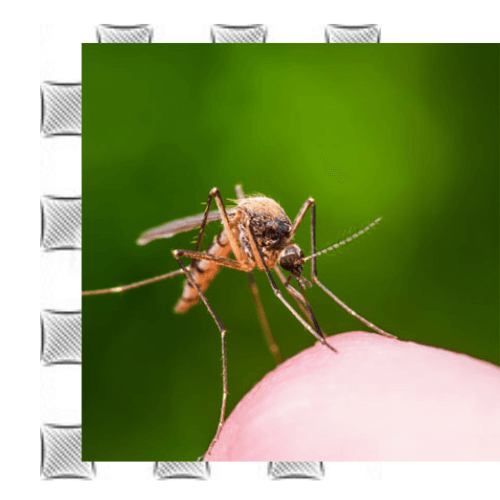Southern Louisiana has a long history of battling mosquitoes due to the warm, humid climate and the sheer amount of freshwater. It was bad enough trying to defend ourselves against the three most common here, the Yellow Fever (Aedes aegypti), the Asian Tiger (Aedes albopictus), and the Southern House Mosquito (Culex quinquefasciatus), but because many hurricanes have landed recently, mosquitoes have been pushed from the marshes into the mainland, and the number of species found here is now over 60.
They aren’t just a nuisance. There have been confirmed captures of West Nile virus-infected specimens in Louisiana in 2021 and in late June of 2021, Eastern Baton Rouge had its first case of the season. The list of pathogens has grown dramatically due to the increase in species. We aren’t the only ones at risk. Heartworm infects over one million pets annually, and it is estimated that over 80% of dogs in Southern Louisiana over two years old are infected.
One of the more problematic mosquitoes that have found their way here is the Cattail. They are a large species capable of flying fast and up to five miles looking for a meal. They are known to be vicious biters, and clothes won’t necessarily protect you. In addition to West Nile, they are also carriers of the eastern equine encephalomyelitis virus. What makes them difficult to control is their larvae and pupae do not need to sit on top of the water to breathe as most species do. They attach themselves underwater to the aquatic plant cattail and remain there until they are ready to hatch. At up to 350 eggs per brood, this is one pest that can become an issue quickly.
With so many flying about, have you ever felt like you were the only one getting bitten? Unfortunately, you may not be imagining it; you may have a target running through your veins. People with type O blood seem to be a particularly delicious target. However that is not the only natural attractant we have. The carbon dioxide we exhale and lactic acid and ammonia we sweat turn them into a living version of a heat-seeking missile. In fact, they can see a target based on carbon dioxide output up to 240 feet away. Imagine being tracked nearly the length of a football field. They make it very difficult to enjoy gatherings and barbeques as is, but you may want to watch what you drink. Some species find you even more attractive after a few beers.
To lower the chance of being bitten outdoors, use a repellent that contains DEET, but not one with more than 30% DEET on children. Avoid flowery-smelling colognes and perfumes and wear long-sleeve shirts and pants whenever possible. Around your home, make sure gutters are clear of debris and standing water, doors and windows are sealed tight, and screens are hole-free.
When taking on this pest is more than you can handle, contact the most-trusted mosquito specialists in Baton Rouge, Denham Springs, and the surrounding areas, Checkmate Termite & Pest Management. For over ten years, our customer’s needs have been the #1 priority. We are family-owned and operated and here for our neighbors and community.
All Rights Reserved | CheckMate Termite & Pest Management

